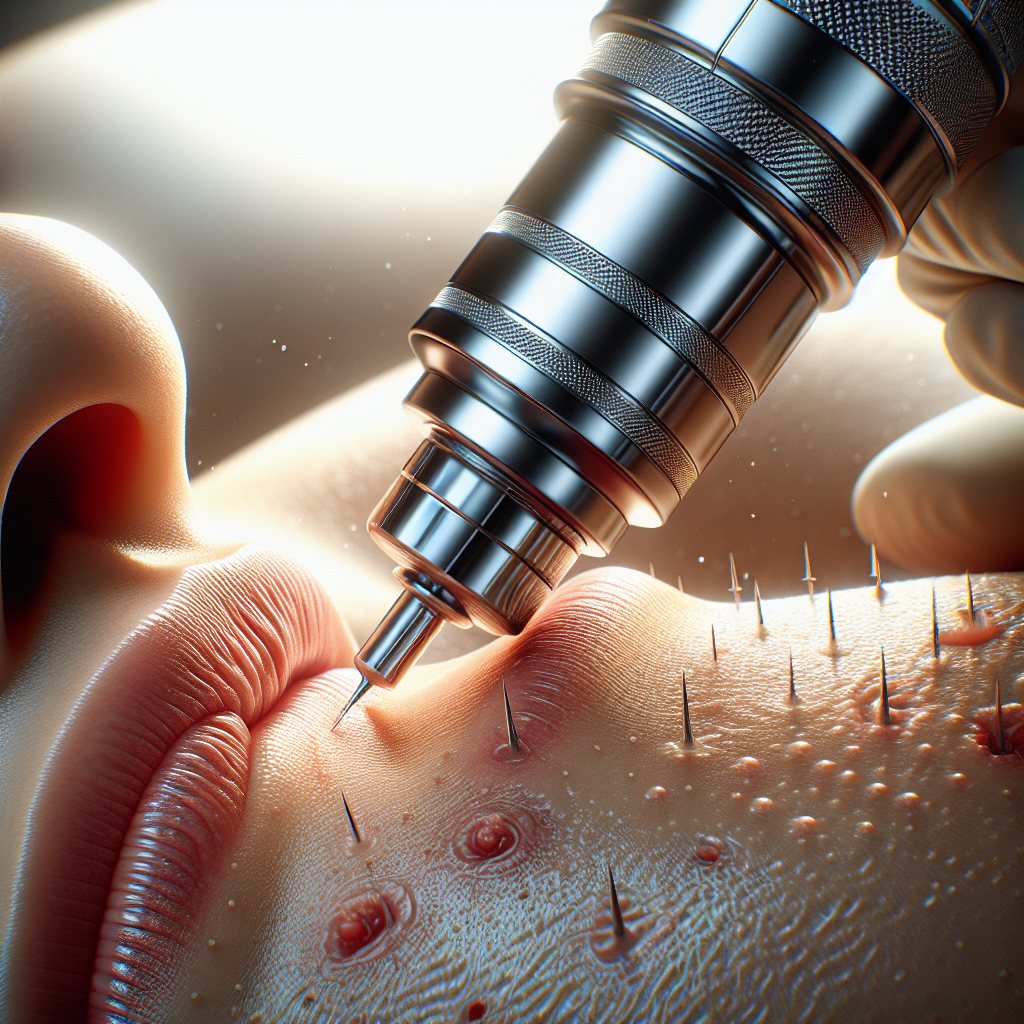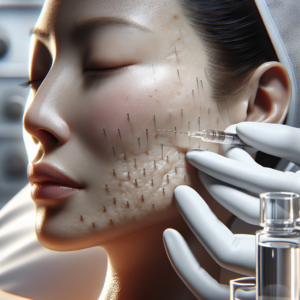Contents
Microneedling for Acne Scars: Does It Actually Work?
If you’ve ever dealt with acne, chances are you’ve also experienced the frustrating aftermath—acne scars. These lingering marks can take a toll on your confidence, and finding an effective treatment isn’t always easy. One treatment that’s been gaining popularity is microneedling. But does it actually work on acne scars? And if so, how?
In this guide, we’ll explore how microneedling targets acne scars, what kind of results you can expect, and whether it’s the right option for your skin. Let’s get into the science, the results, and the real talk about microneedling for acne scars.
What Is Microneedling?
Microneedling, also known as collagen induction therapy, is a minimally invasive cosmetic procedure. It involves using a device with tiny, sterile needles to create controlled micro-injuries in the skin. These micro-injuries trigger the body’s natural healing process, stimulating collagen and elastin production—key elements for healthy, smooth skin.
The treatment can be done professionally with a microneedling pen (like SkinPen or Dermapen) or at home with a dermaroller. However, for acne scars—especially deeper or more severe ones—professional treatments are strongly recommended for better and safer results.
Types of Acne Scars Microneedling Can Treat
Microneedling is particularly effective for certain types of acne scars. Here are the ones it works best on:
- Atrophic Scars: These are sunken or depressed scars caused by a loss of tissue. Microneedling helps rebuild collagen to raise and smooth out the skin.
- Boxcar Scars: Wider, shallow scars with defined edges. Microneedling can help improve skin texture over time.
- Rolling Scars: These have a wavy, uneven appearance. Microneedling helps stimulate collagen to make the skin appear more even and less bumpy.
However, microneedling is less effective for:
- Ice Pick Scars: Deep, narrow scars that extend into the dermis. These may require combination treatments like TCA Cross or laser resurfacing for optimal results.
How Microneedling Helps Acne Scars
The main way microneedling helps reduce acne scars is by boosting collagen production. When the skin is punctured, it naturally works to repair itself by generating new skin cells and connective tissue. This process gradually fills in depressed scars and improves skin texture and tone.
Additionally, microneedling increases the absorption of topical serums—especially those with ingredients like hyaluronic acid, peptides, and growth factors—which can enhance the skin’s regeneration process.
What to Expect from the Treatment
During a microneedling session, your provider will apply a numbing cream before using the device to go over your skin. The treatment typically takes 30 to 60 minutes depending on the area being treated.
Immediately after treatment, your skin may be red and slightly swollen—similar to a mild sunburn. This usually subsides in 1–3 days. Most people require a series of 3 to 6 sessions spaced about 4–6 weeks apart to see significant improvement in acne scarring.
Microneedling Before and After: Acne Scars
So, what kind of results can you actually expect?
Here’s a general breakdown:
- After 1 session: Your skin may look brighter and feel smoother, but acne scars may not show much change yet.
- After 3–4 sessions: Visible reduction in scar depth, improved skin tone, and smoother texture. Collagen production is kicking in at this stage.
- After 6 sessions or more: Many people report a significant improvement—often a 50–70% reduction in the appearance of acne scars.
Consistency is key, and results continue to improve for several months even after your final treatment due to ongoing collagen remodeling.
Microneedling vs. Other Acne Scar Treatments
Microneedling isn’t the only option for acne scars, so how does it compare to others?
- Microneedling vs. Laser: Laser resurfacing can produce faster, more dramatic results but often involves longer downtime and higher costs. Microneedling is gentler and more suitable for all skin tones, especially darker skin, where lasers can risk hyperpigmentation.
- Microneedling vs. Chemical Peels: Chemical peels work on the surface of the skin and are better for discoloration rather than depressed scars. Microneedling targets deeper tissue regeneration.
- Microneedling +


